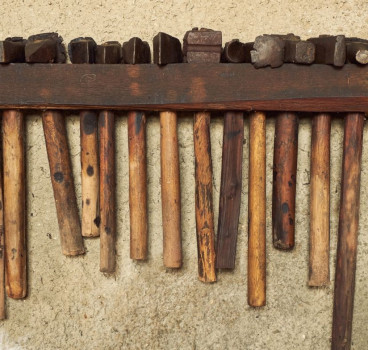Honouring ancient spirits in Japanese construction
In the bustling cityscape of Tokyo, amidst neon lights and towering skyscrapers, an uncanny ritual unfolds. Before the jaws of wrecking balls bite into concrete, and dust plumes engulf empty apartments, a miniature excavator takes centre stage. This diminutive machine, barely the size of a toddler, methodically chips away at a scale model of the soon-to-be demolished building. This is Japan's unique practice of miniature demolition, a symbolic prelude to the real destruction, steeped in cultural values and ancient beliefs.
But why this seemingly tedious dance before the real dust flies? Why not simply send in the heavy machinery and be done with it? The answer lies in the tapestry of Japanese culture, a delicate weave of animistic beliefs and respect for the past. For in Japan, buildings aren't just bricks and mortar; they are vessels of energy, imbued with the lingering spirits of those who inhabited them.
At the heart of this ritual lies the deep-seated belief in "Kami," spirits that infuse everything from mountains to the very buildings we occupy. When these structures reach their twilight, it's believed the resident Kami become unsettled, disoriented, and potentially vengeful if simply discarded. The miniature demolition serves as a gentle farewell, a symbolic way to inform the Kami of the impending change and guide them peacefully from their earthly abode.
It's a way of showing respect to the building and the land it sits on. Such miniature demolition becomes a form of communication, acknowledging the existence of the unseen and seeking their cooperation in the transition.
This practice echoes back to ancient Shinto beliefs, where rituals and offerings appeased deities and spirits associated with natural phenomena and man-made structures. While Shintoism coexists with Buddhism in Japan, the concept of honouring and respecting the unseen remains a strong cultural undercurrent.
But the miniature demolition isn't merely a spiritual appeasement - it holds practical value as well. The scaled model allows engineers to test demolition techniques, identify potential hazards and optimise the real-life operation. It's like a miniature rehearsal, minimising property damage and ensuring a smoother, more controlled execution.
This blend of tradition and practicality makes the miniature demolition a uniquely Japanese phenomenon. While symbolic gestures and reverence for the past aren't entirely absent in other cultures, the scale and meticulousness of this practice is rarely seen elsewhere.
In recent years, this captivating ritual has garnered international attention, sparking curiosity and fascination. Videos of miniature excavators diligently chipping away at cardboard buildings have gone viral, prompting discussions about Japan's rich cultural tapestry and the unexpected ways it manifests in modern life.
Demolition and Creation
But the story of miniature demolition isn't confined to goodbyes and appeasement. It also has a curious flip side, playing a role in welcoming new life. When constructing new buildings, a miniature excavator, adorned with blessings and offerings, carefully clears the land, symbolically preparing it for the new structure. This miniature ground-breaking ritual ensures a harmonious relationship between the new building and the resident Kami, ushering in prosperity and good fortune.
Thus, the miniature demolition becomes a bridge between two seemingly opposing actions – destruction and creation. It recognises the intertwined nature of endings and beginnings, ensuring a smooth transition where the past is honoured and the future welcomed.
As Japan continues to evolve, blending tradition with technology, the miniature demolition ritual serves as a poignant reminder of the deep respect and consideration woven into the Japanese cultural fabric. It whispers of ancient beliefs in the hum of modern machines, reminding us that sometimes, the smallest gestures can hold the greatest significance.
The miniature demolition transcends the realm of mere ritual - it's a cultural tapestry woven with threads of respect, practicality, and a deep connection to the unseen. It's a story whispered in steel and cardboard, reminding us that in the hustle and bustle of modern life, there's still space for honouring the past and welcoming the future with a gentle touch.
Additional Articles

Why modern builders still use tools invented thousands of years ago
Walk onto a modern construction site and you will see plenty of laser levels, drones, tablets and power tools. Yet look a little closer and something unexpected becomes clear. Alongside all this...
Read moreThe elevator that changed the world when Elisha Otis cut the rope
Today, stepping into a lift is one of the most routine acts of modern life. We press a button, glance at the floor indicator, and trust, almost without thinking. that a metal box will safely carry us...
Read more

How the Romans invented central heating
Central heating feels like a modern convenience, yet its core principles were mastered nearly two thousand years ago. Long before boilers, radiators and underfloor heating systems, the Romans...
Read more